Eight years ago. EIGHT. 8!!!
I wrote this: The Perfect Bookstore.
Never underestimate the commercial value of mental illness.

Eight years ago. EIGHT. 8!!!
I wrote this: The Perfect Bookstore.
Go read this and all the comments, then come back. Now we’ll recap.
Footprint: A narrow storefront on the county square of a small midwestern city, with three floors. (I didn’t bother with the third floor sketch. Use your imagination.)
Complaint: It’s not a “real” bookstore.
Disclaimers: 1) I’m not an industrial designer so don’t ding me on scale, lack of bathrooms, and walking space, etc etc etc. 2) This is an IDEA. Don’t take me to task as if I’m on the cusp of taking over the world and implementing all these in a grand sweep tonight while you sleep.
Goal: To make the bookstore a destination, not a stop on your to-do list.
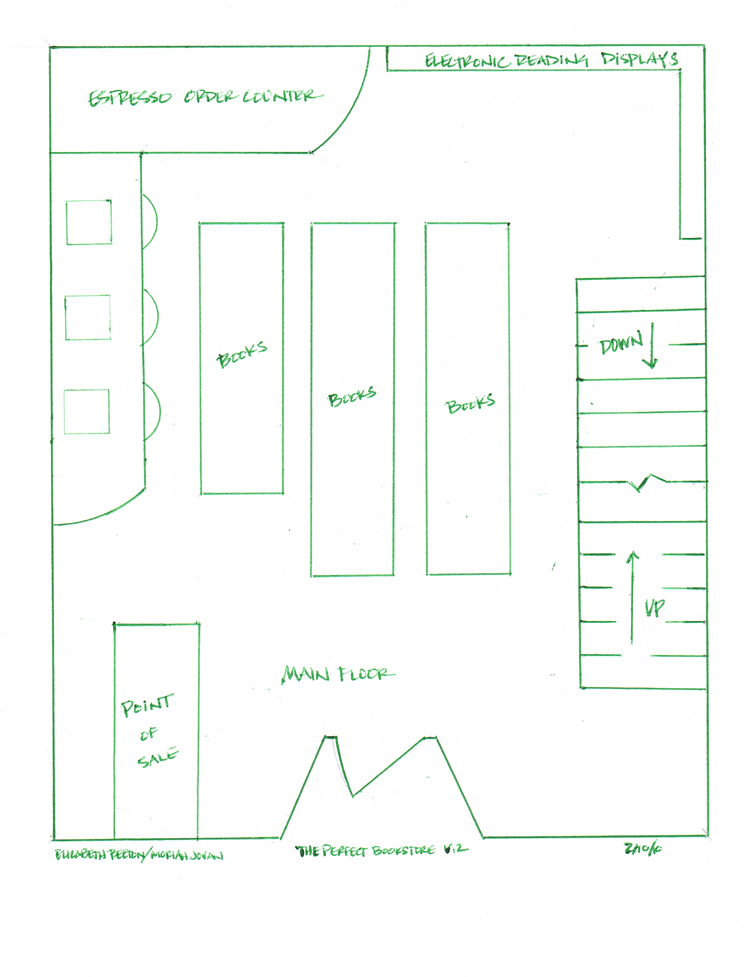
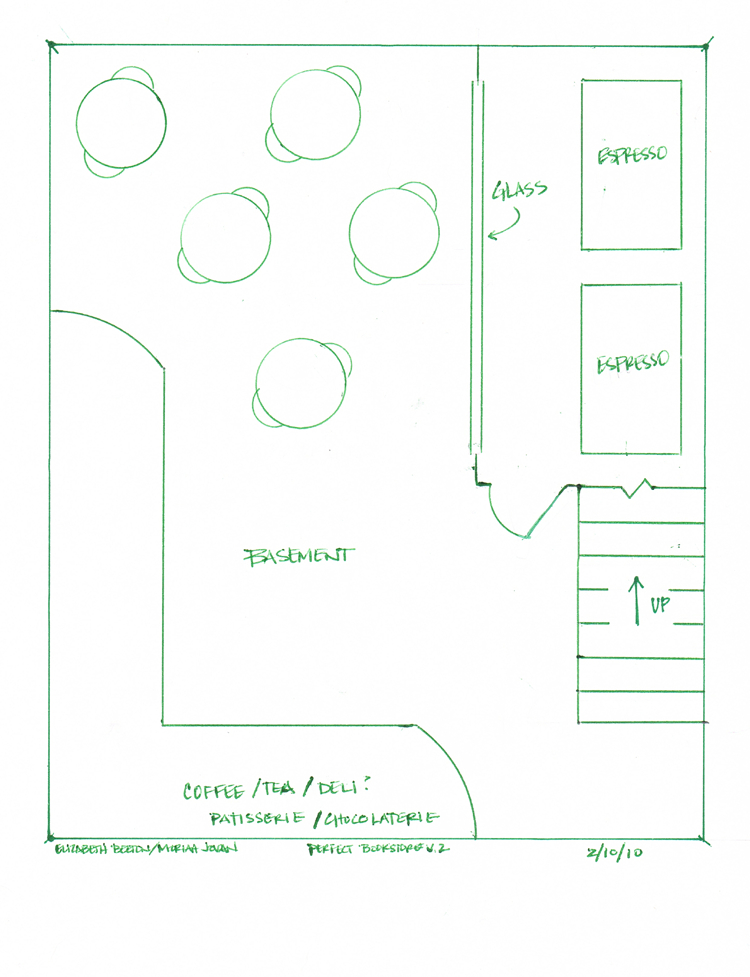
I. Print on Demand
This is the key to blending the Espresso and “real” books:
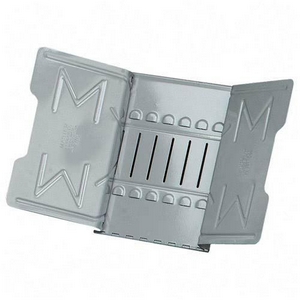
II. eReading
You may purchase the most current electronic reading devices and be advised by someone who actually knows what they are, how they work, and can teach you. There will be workshops.
III. “Real” books
IV. Sustenance
In the basement there will be a coffee/tea bar with pastries and chocolate, possibly a small deli. There will be ample room to hang out.
V. Extras
There you go. Blast away.
Harlequin, I see you’ve set up a, um, POD?/vanity?/subsidy?/self-pub? (no definitely not self-pub) arm of your company.
Congratulations. I think that’s brilliant.
However, you have negated that brilliance by the simple fact that you have obviously not gone about researching the industry any more than anybody you hope to make a customer.
What I do not think is brilliant is the following:
1. Partnering with AuthorSolutions, Inc.
Consider:
Bad, bad business decision, just from a P&L standpoint. Geez, you’re cutting off your margins to spite your bottom line.
2. Attaching your brand.
I shouldn’t even have to explain this.
UPDATE: As of 11/19/2009 4:12 PM, Harlequin has decided to rename its vanity press division something other than Harlequin whatever. Pub Rants got the scoop.
3. Thinking/branding it as self-publishing.
Self-publishing involves setting up shop as a business and outsourcing the tasks you can’t do yourself. What you’re doing is a service company promoting way overpriced service packages.
4. Your website really does kinda suck.
Oh, sure. You’ll get a lot of customers, and that’s okay. I see nothing wrong with it. I just think you coulda gone about it a different way.
And this is what surprises me. Harlequin, you’re brilliant. You’ve made nothing but all the right steps in all these decades of publishing. You flourish where others founder. You took a great (welcome) leap with Carina, but this? This displays the business sense of a kindergartner.
It makes me think your parent company is setting all this up and making you (and by extension, Malle Vallik) take the fall.
In case nobody’s noticed, my Perfect Bookstore post has garnered a wee bit of attention here and there around the interwebz, thanks to @RonHogan who linked me in GalleyCat and then Teleread picked me up.
![Tweets between me and @RonHogan on July 7, 2009. Tweet from me: “@RonHogan Dude, you put me on about a gazillion print-book lovers’ hit lists. Heeeee!!!” Reply from @RonHogan: “Heh. And that was after I decided AGAINST titling the post ‘Who is Morian [sic] Jovan And Why Does She Hate Paper Books So Much?’”](https://moriahjovan.com/talesofdunham/wp-content/uploads/2009/07/20090729_ronhogantweet.jpg)
I’ve been to very few of the pingbacks, but of the ones I have, quite a few of them described the post as cheeky.1 I like that. I like that they recognized that instead of presenting it like I was completely serious and the plan/design was complete. I have lots of ideas about a whole lot of things. Most of them are half-assed.
______________________________
1. My vision of “cheeky” is Mary Poppins standing in front of her mirror and lightly chastising her reflection for one-upping her. So, um, for non-regular visitors to the blog, I’m pretty cheeky about everything.
It’s been clear for months that it will be a not-so-merry holiday season for publishers, but at least one house has gone so far as to halt acquisitions. PW has learned that Houghton Mifflin Harcourt has asked its editors to stop buying books. […] Another agent who had also heard about the no-acquisitions policy at HMH called the move “very scary” and said it’s indicative of an industry climate worse than any he’s ever seen.
Predictions:
Yeah, it’s depressing, but A) everybody’s having a hard time, so boo hoo at you too, publishing and B) everything is cyclical.
Quite frankly, the economic downturn and the rise of the ebook couldn’t be timed better. You build up the low-cost or free alternative in the downswing (coupled with instant gratification), something people can afford and are open to, then you see it explode once the upswing begins.
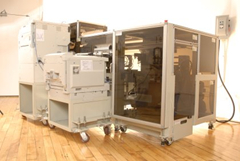 Dead tree books will NOT be a thing of the past (knock on wood), but the smart publishers and booksellers will find cheaper alternatives to bring those to market too. If you want to survive after an economic downturn, you must start thinking in the long-term instead of the short-term; you sure as heck aren’t making any money now, so figure out how to make money when everybody has some again.
Dead tree books will NOT be a thing of the past (knock on wood), but the smart publishers and booksellers will find cheaper alternatives to bring those to market too. If you want to survive after an economic downturn, you must start thinking in the long-term instead of the short-term; you sure as heck aren’t making any money now, so figure out how to make money when everybody has some again.
Pssst, publishers and booksellers:
It’s called the Espresso.
In kiosks.
At Wal-Mart, Target, and smack DAB in the middle of your chain or independent bookstore.
 I’ve had a lot on my mind lately that I haven’t been able to untangle, much less unpack on an issue-by-issue basis. What are they?
I’ve had a lot on my mind lately that I haven’t been able to untangle, much less unpack on an issue-by-issue basis. What are they?
But a couple of posts on Nathan Bransford’s blog yesterday sorted at least one issue out for me, which is my firm belief that whether or not independent publishing becomes as accepted independent filmmaking and independent music making, it was the right choice for me. And I’m going to come back to that Espresso Book Machine thing because it’s tres important.
Which leads me to a post Mike Cane made recently about self-pubbing and an author’s inability to do it all, yet tries because he wants to save money. He’s right overall, but I learned long ago that creative types in one discipline are drawn to other disciplines and have the ability to do those well, too. What they are, though … that I can’t say. So that’s going to be my jumping off point for today’s Jack Handey.
This and that, in no particular order. Mostly stuff I forgot in the ePub post or didn’t know while I was writing it or changed as soon as I hit the “publish” button.
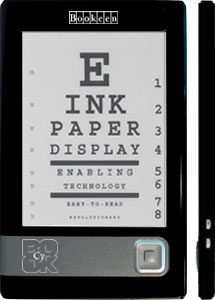 BOOKEEN CYBOOK. I briefly mentioned this in the ePub post, but forgot to say that this is one that’s caught my attention more than a few times. It’s just that it gets overshadowed by the Biggies and I forget about it. eInk (therefore, no backlight–but you knew that), supports PDFs (don’t know about reflow), plays mp3s. Also supports Mobipocket, HTML, TXT, and PalmDoc. It runs $379, which is a bit rich for my blood.
BOOKEEN CYBOOK. I briefly mentioned this in the ePub post, but forgot to say that this is one that’s caught my attention more than a few times. It’s just that it gets overshadowed by the Biggies and I forget about it. eInk (therefore, no backlight–but you knew that), supports PDFs (don’t know about reflow), plays mp3s. Also supports Mobipocket, HTML, TXT, and PalmDoc. It runs $379, which is a bit rich for my blood.
BEBOOK. There’s a new little kid in town. According to MobileRead forums, this puppy’s got 30k machines in circulation (which I have no idea what that really means). At $349, you can add it to the eInk contenders.
BOOKS ON BOARD and DIESEL EBOOKS. I know I talk about Fictionwise a lot, but more and more I find myself going to booksonboard.com and diesel-ebooks.com just because their formats are easier to follow and I can find stuff more easily. Fictionwise is a nightmare for my poor ADD. So, hey, Fictionwise. Do something about your web design, because you’re about to lose a customer.

Coming to an Australian bookstore near you. Am I the only one who can visualize this beast in the middle of Wal-Mart and Target, Sams Club and Costco? I mean, this isn’t new news; the concept has been around for a while, but the machines are expensive.
Still, I’d think Barnes & Noble and Borders would find this to be worthy of early adoption, if only to reduce their stores’ square footage and associated costs. Why are you still sitting in that small box? Your cheese moved.
[Okay, okay, to be fair, PersonaNonData reports that they’re steadily rolling out in the US.]
As ebookie as I am, I’m excited about this thing Time called an “ATM for books.” Paper is still my first love, to stroke and fondle, to smell and behold. Uhm, paper prØn?
STANZA. I’ve been hearing a lot lately about this ebook reading software which runs (built expressly for? I don’t know) the ePub format. After preliminary perusal, we at B10 find this pertinent to us in that it offers ways to convert text to the ePub format and an iPhone/iTouch app to read ebooks on those devices. According to the website, it is also:
… the first program that has a built-in export feature especially for the Amazon Kindle. Your PDFs, Word documents, and other eBooks can all be exported to the Kindle’s native format and copied over to the device using a USB cable.
However, before we get our hopes up, Apple may blackball Stanza the way it’s blackballed Podcaster. Still, Stanza 1.4 (newest version) is now up in the iApps store.
So along with Stanza, the current state of publishing, the slow (in my opinion) early adoption of the Espresso by outlets such as Barnes & Noble and Borders, please simply add in the requisite anti-DRM rant–
Just how long until commercial publishers start using Stanza to sell and distribute their wares as nonDRMed ePub? And how will the terms compare to those of Amazon and others? (From the Teleread article linked above.)
This is where you start wondering where the Greedy Bastards went. Ban? Ignore? Flee? No! Embrace! Embracement = mo’ money. Where’s Gordon Gekko when you need him?
PUBLISHERS
I’d like to see new and different in romance. It took Ellora’s Cave and Loose Id and Samhain to break you out into genres you wouldn’t touch before (and no, they’re not all erotica).
I’d like to see you lead the way into e-publishing but again, you didn’t get in gear until the above-mentioned trailblazers kicked your butts. Apparently not even Baen was able to get to you like those three did.
INDEPENDENT BOOKSELLERS
The consignment system of inventory management is, I believe, in its late afternoon and Barnes & Noble CEO Riggio wants to push it into that good night. Agent Richard Curtis (and foresightful creator of e-Reads) points out that it’s not going away–on the dead-tree book brick’n’mortar playground, but, he says,
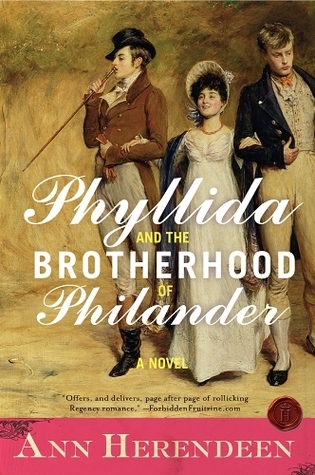 Phyllida and the Brotherhood of Philander
Phyllida and the Brotherhood of Philander
by Ann Herendeen
Yeah, so I’m not really all about the bisexual historical romance (“a man in love with his wife and his boyfriend”), but what I am about is when self-publishing serves its purpose, which is to say, it gained an audience and a traditional NY publisher’s attention.